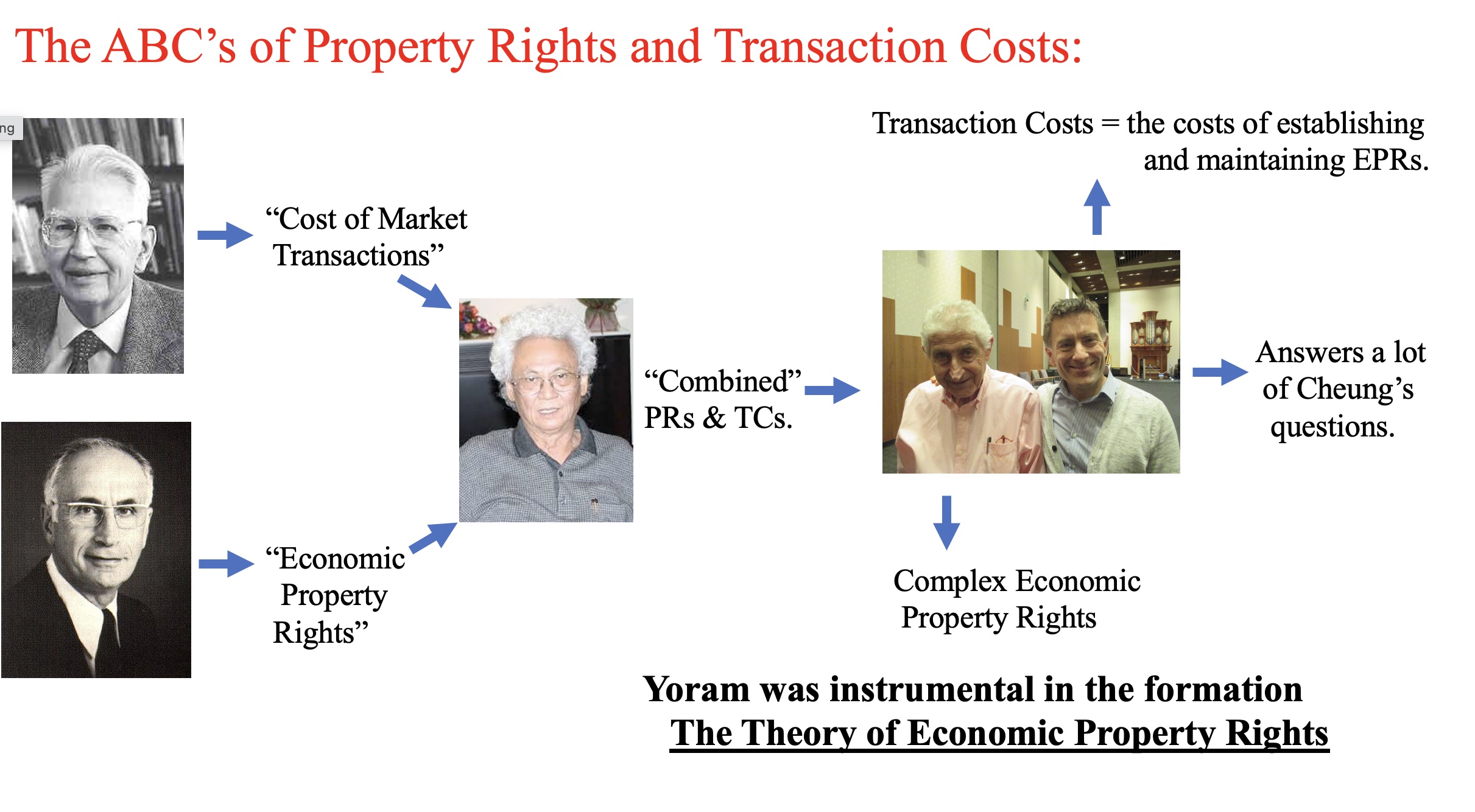Yoram Barzel
(1931-2022)
I was a fan of Yoram Barzel many years before I met him. I knew him
through his work. When I went to the University of Washington I went
with the intention
of working with him, though I had no idea how that would come about.
After only a week on campus I was shocked to find him standing at my
door. He introduced
himself and asked if I would come to his office, he had a paper he
wanted my opinion on. I was shocked. As he explained the paper to
me, all I could think of
was "I'm standing in the great Yoram Barzel's office!" The only
thing I heard him say was "well, what do you think?" What did I
think? I hadn't thought about anything
except that I was standing in his office. I blurted out "I think the
paper is quite long," and immediately realized Homer Simpson could
have come up with
something better. Yoram demonstrated his natural kindness by
responding "Yes, I think you're right. It is too long."
That began a great friendship with a wonderful mentor. Yoram was a
kindred spirit who looked at the world in just about the same weird
way that I do. I never heard
him talk of politics, the weather, or other idle chit-chat.
Everything was always pure economics. Below is a great picture of
Yoram, and below is the introduction I gave for his presidential
address to the Western Economics Association in the early 2000s.
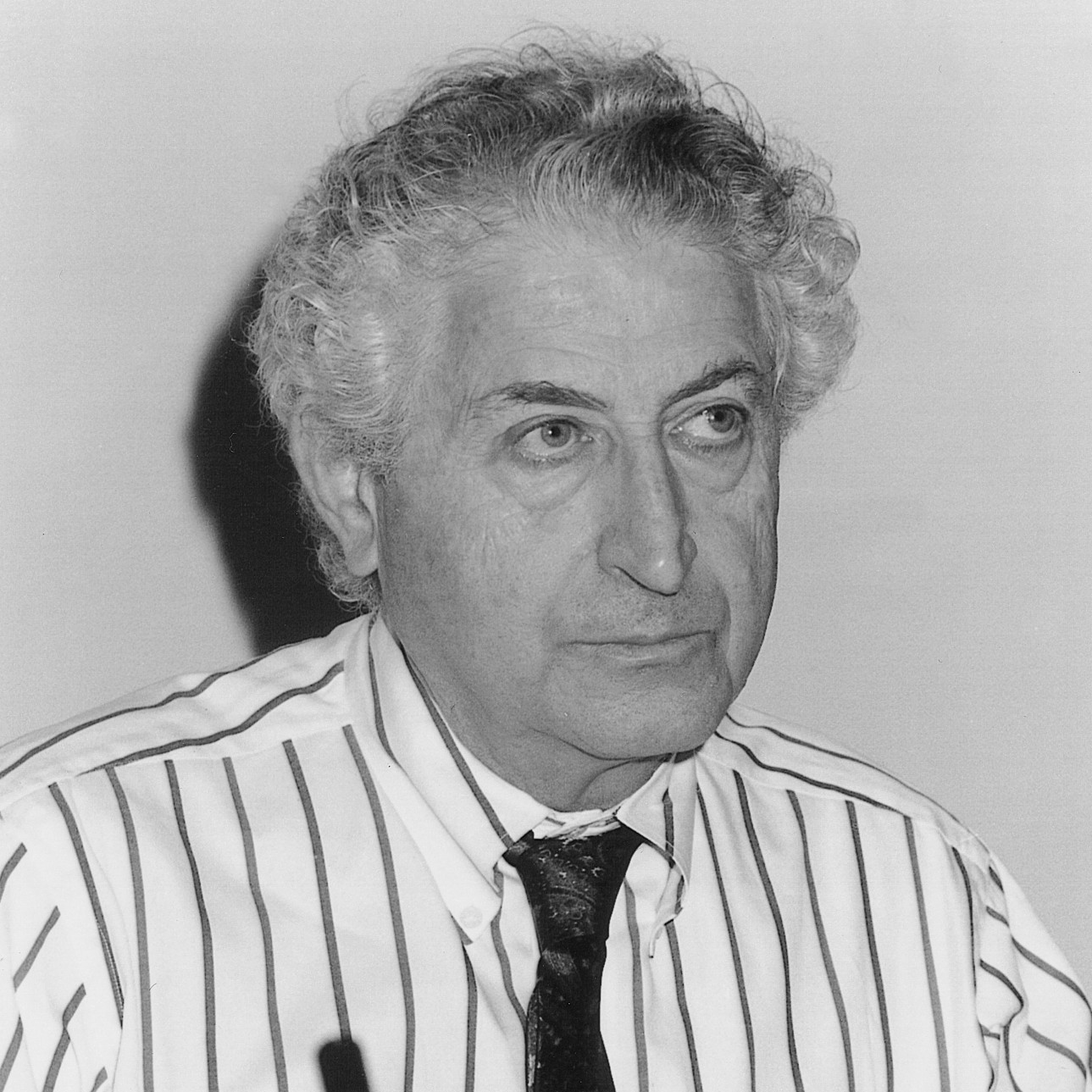
INTRODUCTION
In thinking about what I should say to introduce Yoram Barzel, I
couldn’t help but think “what would Yoram’s thoughts be about
Presidential introductions” I’m sure he would say:
“No one remembers an introduction,
no one pays attention to an introduction,
everyone is just waiting for the real speaker to step up,
and besides it’s costly to prepare and listen to an introduction …
so the optimal thing to say is nothing.”
However, I could never do that, if only because it is too great a
personal pleasure to introduce my mentor and friend.
Although Yoram has been a friend and father figure to many of us,
I’m not going to focus on this aspect of his career today. Rather, I
want to make 5 very brief points about his research achievements,
which after all, are the grounds for his appointment as President of
the WEA.
1.Yoram has been a lifelong researcher. After completing his Phd at
the University of Chicago, Yoram published his first paper in
Econometrica (that’s right, Econometrica) in 1963. Last year,
Cambridge University Press published his book on the state. How many
here think they’ll be publishing books with Cambridge when they are
70? In between he published approximately 40 articles and two other
books. For 40 years Yoram has been crossing Lake Washington to spend
his time writing in his 4th floor office at Savory Hall, and at 70
he shows no sign of slowing down. His work ethic is a tremendous
example to us all, and stands in sharp contrast to the common custom
of working hard until tenure and then coasting or consulting
until retirement.
2. Yoram has been versatile in research. Most probably know,
although many might not, that Yoram was hired at the UW as an
econometrician. If you look at Yoram’s work in the 1960s it is
dominated by estimation of cost and production functions. This work
was all published in top journals. Yoram’s work began to change with
his 68 paper on innovation, and by 1974 with his publication of
rationing by waiting he had completely switched over to studying
property rights and transaction costs. What I find hard to imagine
is that Yoram made this switch in his early 40s. Again, at a
time in life when most academics slow down and start to do
derivative work, Yoram changed gears and had his biggest impact on
the profession. Of course, this might also have resulted from the
boredom in estimating production functions.
3. Yoram has been extremely influential. There are many people
in our profession with more than 40 papers to their credit. Yet very
few of us have written papers that others care about. In contrast,
some of Yoram’s papers are the most cited in our discipline, and his
ideas permeate much of the writings of others. In particular his 68
paper on racing to innovate and his 76 paper on taxation are
frequently ranked in the top 20 cited papers of all time. Other
paper’s by Yoram are so important that they have defined a
literature. Here I’m thinking of his 77 paper on information costs
and his 82 paper on measurement. When people talk about the ABC’s of
Property Rights, they might have Alchian and Coase in mind, but the
B stands for Barzel. To a lot of us the work of Yoram is the bedrock
of this field.
4. Yoram was ahead of his time. Yoram’s idea that effort to
capture property rights can be dissipating and that efforts are made
to minimize this dissipation, is still not widely grasped. It is
common now to talk of “multi-task agency” problems, “multiple
property right dimensions”; “property rights”, “goods attributes”
and often these ideas are referenced to other individuals, but all
of these ideas go back to the work of Yoram in the 70s and early
80s.
5. Yoram’s work in interesting. When I was an undergraduate student
a professor of mine caught me reading Yoram’s measurement cost paper
in the library. Knowing my interests at the time he said “Are you
reading that paper because it has “theory of the firm” in the title?
“No” I responded, “I’m reading it because it has “Yoram Barzel” in
the author.
Personally, I find much of what gets done in economics quite boring,
but this can’t be said of Yoram … well ok, the paper on technology
in steam power is pretty boring, but that’s the exception that
proves the rule. Part of Yoram’s talent is to choose topics
and examples that spark interest. In measuring technical change he
looked at the Indy 500, to examine labor markets he looked at
slavery, to understand measurement costs he taught us about DeBeers’
diamonds. However, the real genius of Yoram’s work is that he always
comes up with clever answers.
Many often comment or compare Yoram’s work with that of Steve
Cheung’s. In the 1970s at the University of Washington, these two,
along with Doug North and others, were the center of the universe
for the study of property rights and transaction costs. It strikes
me that Cheung was excellent at asking great questions: why
sharecontracting, who sets the price in a price taker market, and
the like. But when it came to great answers to even mundane
questions, Yoram was king. Yoram could take an observation like
“sometimes apples come in brown bags and other times they come in
clear plastic ones,” and could come up with an answer that also
explained every thing from vertical integration to price
discrimination.
Finally, I guess I can’t introduce Yoram without saying that
he is one of the most gentle and nice people in the profession. I’m
so glad that he was honored with the presidency because he deserved
it for so many reasons. And with that it is now my pleasure to
introduce to you, our speaker for today, … Professor Yoram Barzel.
************************************
One of the amazing things about Yoram was his stamina. In 2012 ISNIE
held several sessions at their annual meeting in honor of
Yoram. Despite being 80 years old, he went to every session
and stayed up into the night with the younger folks . When he
returned to the ISNIE meetings at Harvard in 2015, he behaved the
same way. Here are a couple of pictures from those meetings.
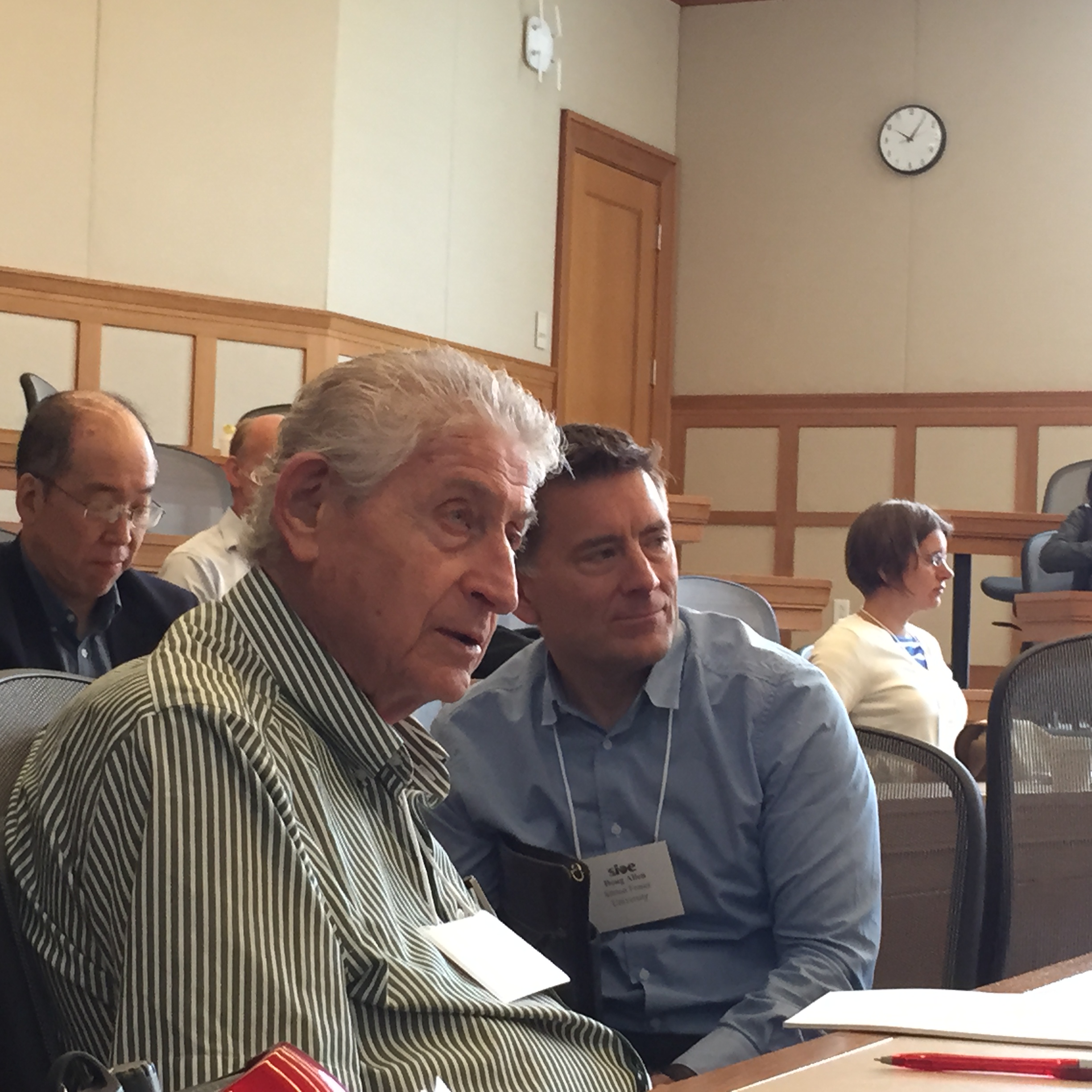 Yoram's wife
Dina says that I look like Yoram. I think it is just the bags under
our eyes.
Yoram's wife
Dina says that I look like Yoram. I think it is just the bags under
our eyes.
My attempt to capture the moment as "art":
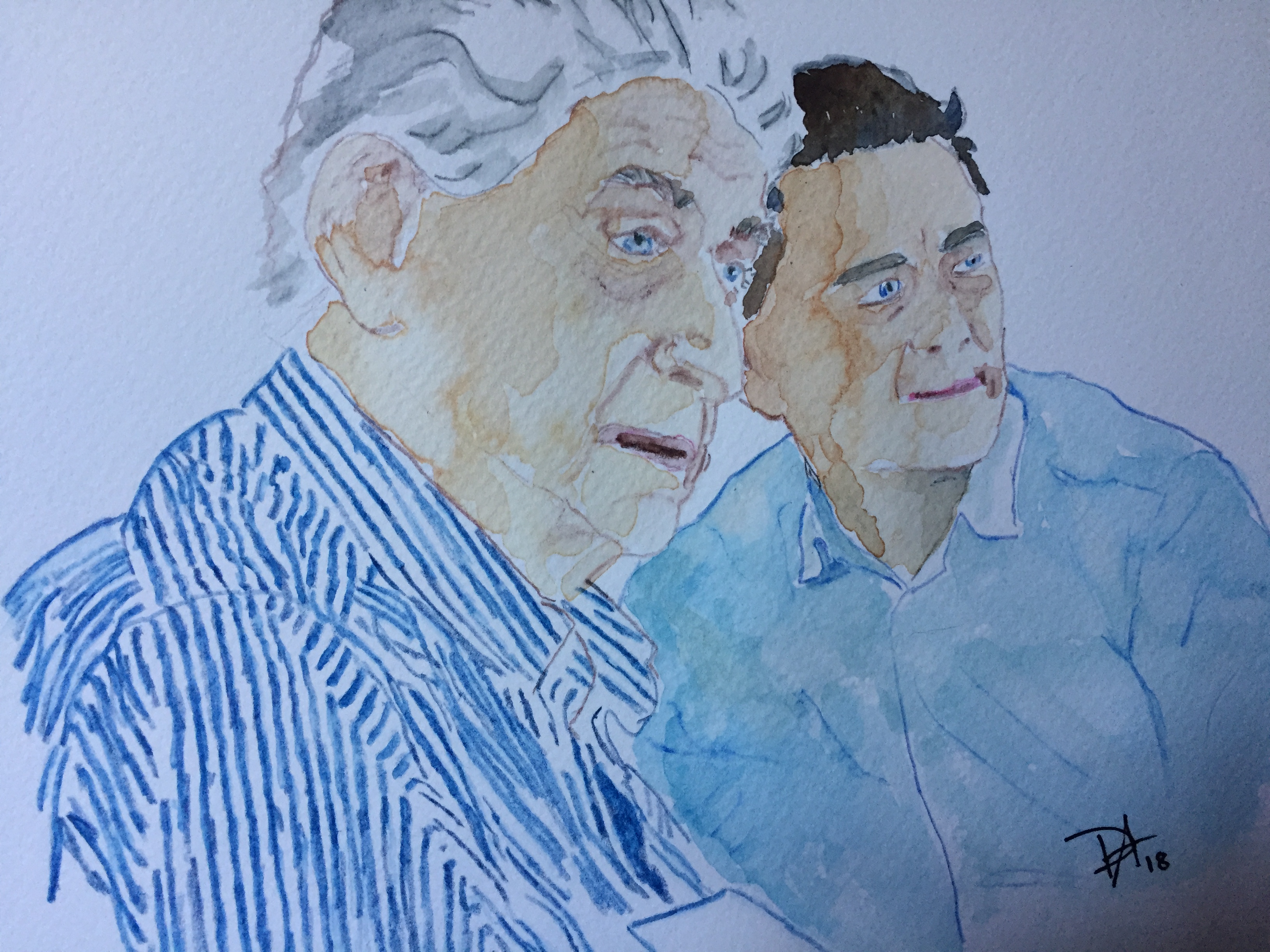
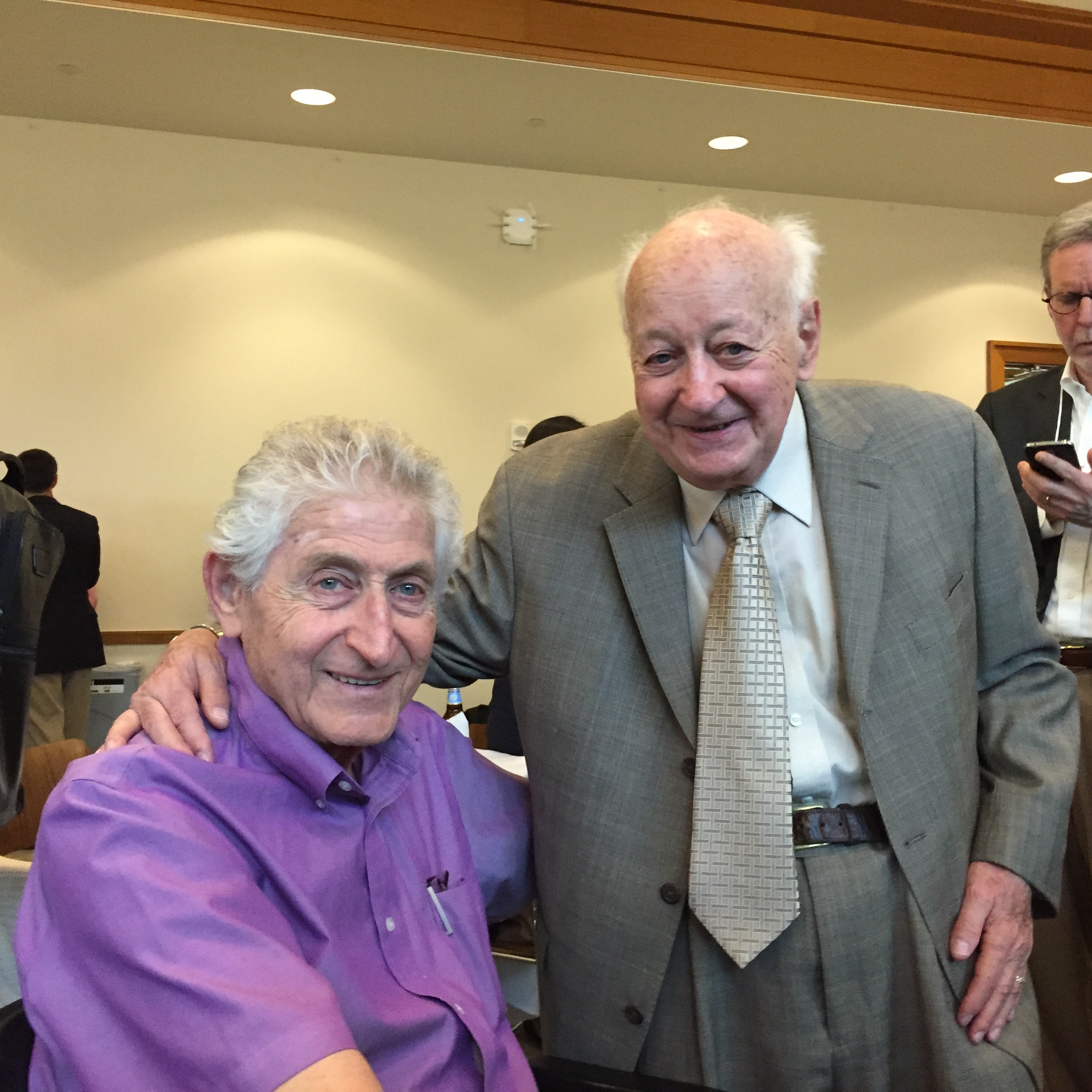 Yoram and
Harold Demsetz. The two of the three last remaining original giants
of the Property Rights field. Harold was two years older than Yoram,
and on this night
Yoram and
Harold Demsetz. The two of the three last remaining original giants
of the Property Rights field. Harold was two years older than Yoram,
and on this night
he was awarded the Elinor Ostrom lifetime achievement award.
That's Scott Masten in the background, photo bombing an historic
picture.
Yoram won the Ostrom award in 2017, and it was a source of great
pride for him and Dina.
Here is the last picture of the two of us.
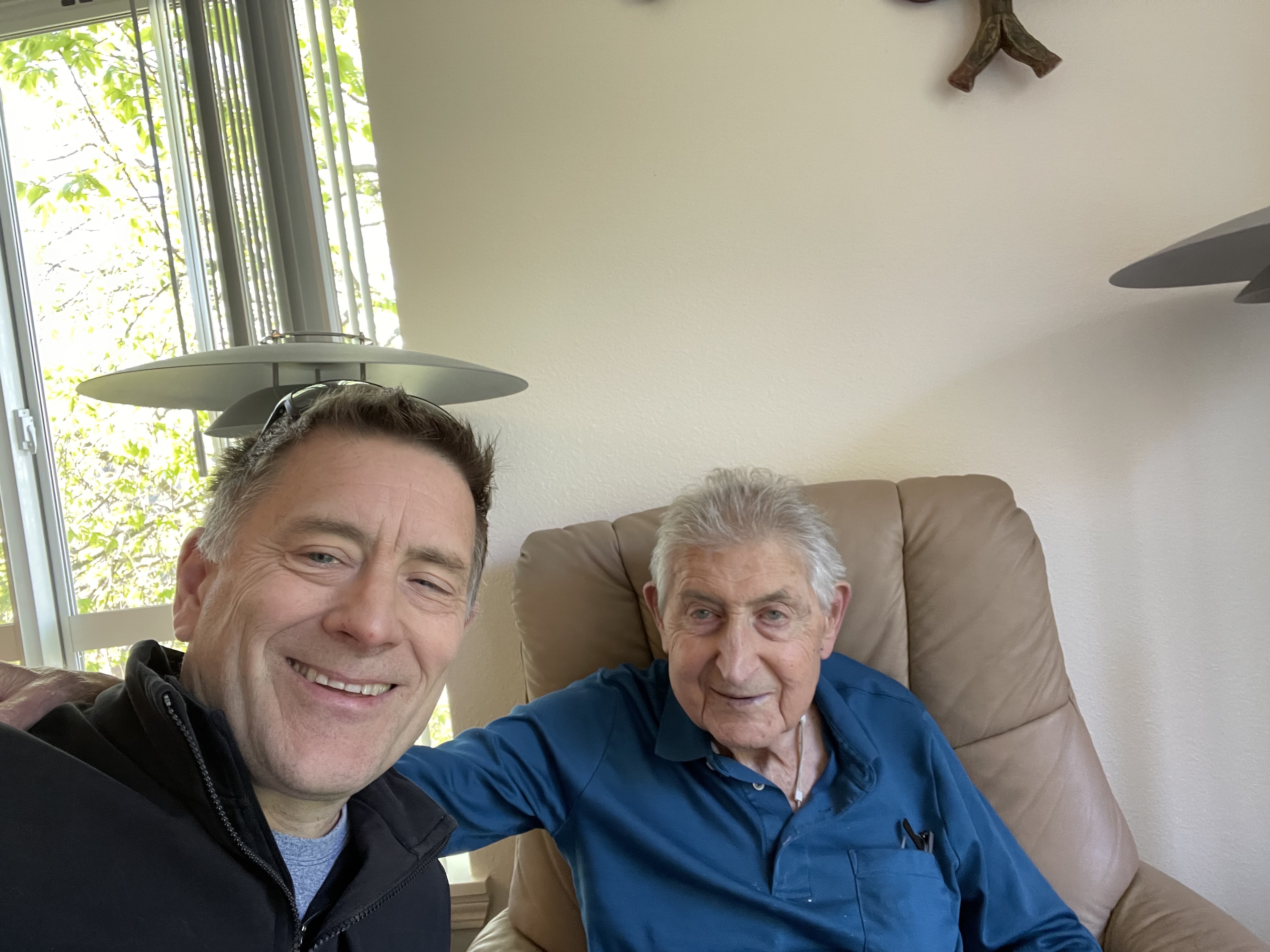
Yoram had asked me around 2008 to update his book. In a weak moment
during the Covid pandemic I finally agreed. It turned out to be a
much bigger job than I'd anticipated, but the final product was a
good one. Over the course of writing that book we were only
able to meet three times. This photo was taken on the second
visit in April 2022 when the draft was finished. It was a
great day, and one I will never forget. I saw Yoram again in
September, and he passed away in December, close to his 91st
birthday.
He was a good man in all the best meaning of that word.
Intellectually honest, always curious, deeply loyal to his friends,
and generous of his time.
Here is a little image of how I think various people are connected.
Coase introduces the notion of "the costs of market
transactions." It is incomplete, but something other than
frictions.
Alchian develops the idea of economic property rights (independent
of legal rights), but does not connect them with TCs.
Cheung, in his genius, brings these two ideas together in his 1969
classic book. He uses this to ask questions no one ever thought of
before, but he's not always consistent, nor always explicit. He
quits too early, but not before having a massive influence on Yoram.
Yoram developed the concept of "divided rights" and showed how this
advanced our understanding of many things.
With humility, I will say that I formally brought the ideas of TCs
and PRs together and argued for a functional relationship. In the
3rd edition of the book, we develop a PR based theory of
institutions, which I hope catches on.
